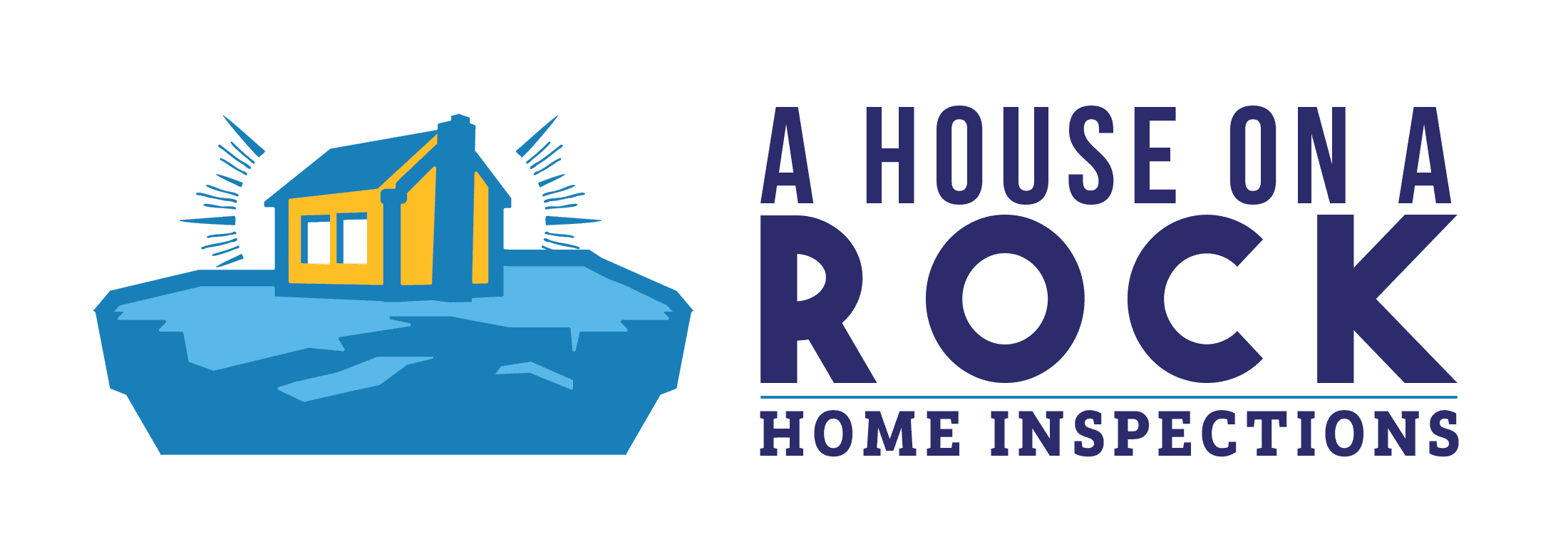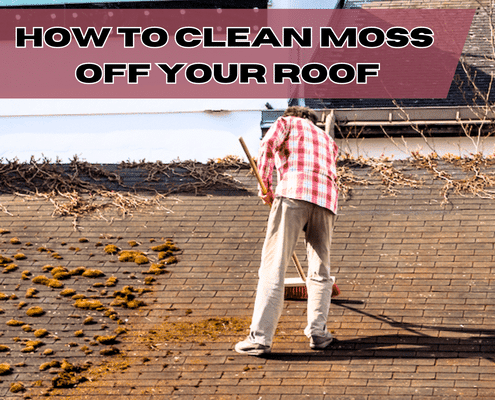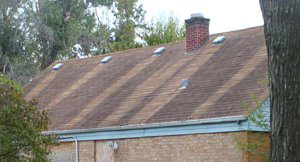How to Clean Moss off Roof – The Right Way
The best way to clean moss growth off your roof surface is to softly broom brush looser moss, leaves, tree branches and other debris on the roof. First, soak the entire roof with plain water from a garden hose. Next, spray the roof and remaining moss with a bleach solution of half water, and half chlorine bleach. This will kill the boss and algae growth.
Are you worried about bleach damaging your roof, or killing nearby plants? Then use BioAdvanced Moss and Algae Killer. The active ingredient is potassium salts of fatty acids.
You can then use a garden hose to gently remove dead moss, or let it weather off itself.
Note: Algae and moss are not the same. Algae is the black staining on your roof. It is harmless, but you can remove it with the same process for aesthetic reasons.
Bonus Tips For Moss Removal
Don’t do this on a sunny day, as it may evaporate your solution too quickly to the moss.
Always sweep downward, or direct your leaf blower downward to prevent shingle uplift.
Never use a pressure washer, a wire brush, or anything aggressive for moss removal. This will damage your roof shingles and reduce the life of your roof.
Use a 12v backpack sprayer to make easy work of spraying the roof. Plus, you can use it to kill weeds and apply insect control treatments around your house.
If you use bleach, you can pre-rinse and post-wash nearby plants with clean water to prevent damage. In addition, you can cover nearby plants with plastic sheeting to protect them.
Finally, make sure you use protective gear, such as a roof fall protection system.
Does moss need to be removed from a roof?
A moss problem on your roof, absolutely needs to be addressed. Moss damages your roof in two ways, and overtime can cause serious damage and costly repairs.
The first way moss damages your roof is by retaining water against the roof surface. Heavy moss buildup contains a lot of water and that water can saturate the shingles and eventually leach water out to the OSB.
The second way moss damages your roof is by growing under the asphalt shingles. When moss grows under the shingles it puts upward pressure on the shingle which can lift the shingle. This gap makes it easy for gusts of wind to rip off shingles.
How to prevent moss growth on your roof
Any moss treatment should be followed up with preventative measures to prevent future growth. Most grows in damp environments. If you have a lot of trees keeping your roof shaded, it may not dry off, encouraging the growth of moss. Most people like trees though and removing them to prevent moss growth may not be an optimal solution.
Zinc strips and copper strips are another solution. These strips of metal get installed under the ridge cap. As rain water moves over the strips of metal it removes zinc particles and distributes it through the shingles below. This prevents moss and algae growth for many years.
You can see in this photo the roof is clean below the metal flashing. This is the same as applying a zinc strip to the roof.
The downside to zinc strips is that they may not work for the whole length of the roof and to get the best results you may need more strips. A professional roofer may be need to do the install since you’re installing nails through the roof. This can increase the cost as well.
You can also apply BioAdvanced Moss and Algae Killer to prevent moss growth and algae stains. The downside to this method is that it requires every year or bi-annually depending on the weather conditions in your area.
Check Out More Expert Roofing Articles
- Roof Replacement Cost Calculator
- What is Roof Flashing? – Code, Purpose, and Types
- Year 11 of your “20 Year Roof”
- Can a Roof Have Two Layers of Shingles?
- What is Roofing Felt?
- Rafters VS Roof Trusses: Complete Structural Guide
- Top 5 Roofing Materials in Virginia
- 3-Tab Shingles Vs. Laminated Shingles (Architectural)
- What is an Ice Dam
Key Take Aways
Moss growth is bad for your roof. It can deteriorate the shingles, cause leaks, and leave you with expensive repairs.
Remove moss to maintain the lifespan of your roof.
The cleaning process is pretty simple, but if you don’t feel comfortable on a roof, call a professional.
Pressure washing your roof will damage it.
Prevent moss from growing on your roof in the first place .
As an amazon associate I earn from qualifying purchases





